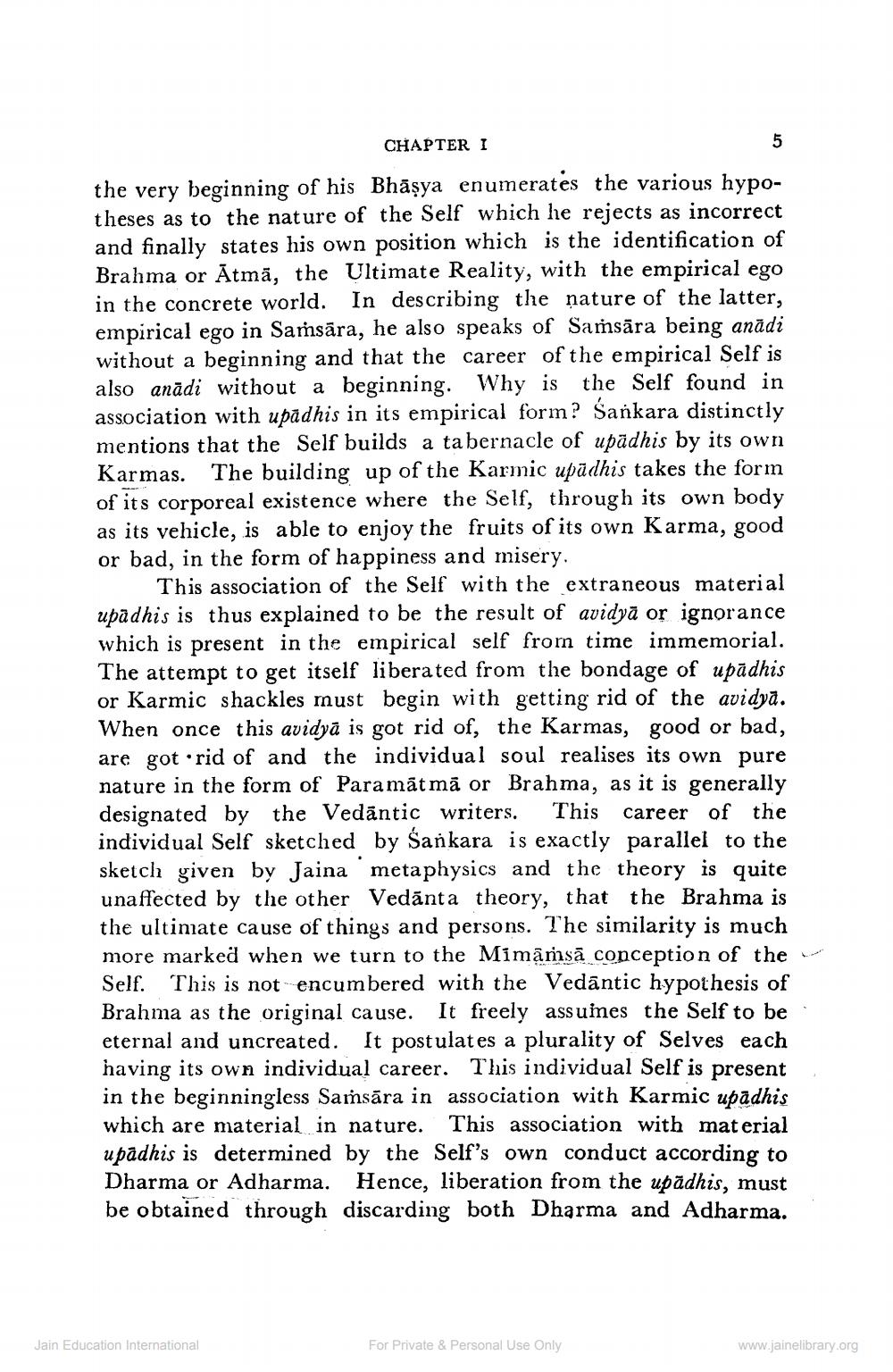________________
CHAPTER I the very beginning of his Bhāșya enumerates the various hypotheses as to the nature of the Self which he rejects as incorrect and finally states his own position which is the identification of Brahma or Ātmā, the Ultimate Reality, with the empirical ego in the concrete world. In describing the nature of the latter, empirical ego in Saṁsāra, he also speaks of Samsāra being anādi without a beginning and that the career of the empirical Self is also anādi without a beginning. Why is the Self found in association with upādhis in its empirical form? Sankara distinctly mentions that the Self builds a tabernacle of upādhis by its own Karmas. The building up of the Karmic upādhis takes the form of its corporeal existence where the Self, through its own body as its vehicle, is able to enjoy the fruits of its own Karma, good or bad, in the form of happiness and misery.
This association of the Self with the extraneous material upādhis is thus explained to be the result of avidyā or ignorance which is present in the empirical self from time immemorial. The attempt to get itself liberated from the bondage of upādhis or Karmic shackles must begin with getting rid of the avidyā. When once this avidyā is got rid of, the Karmas, good or bad, are got rid of and the individual soul realises its own pure nature in the form of Paramātmā or Brahma, as it is generally designated by the Vedāntic writers. This career of the individual Self sketched by Sankara is exactly parallel to the sketch given by Jaina metaphysics and the theory is quite unaffected by the other Vedānta theory, that the Brahma is the ultimate cause of things and persons. The similarity is much more marked when we turn to the Mimamsā conception of the Self. This is not encumbered with the Vedāntic hypothesis of Brahma as the original cause. It freely assumes the Self to be eternal and uncreated. It postulates a plurality of Selves each having its own individual career. This individual Self is present in the beginningless Saṁsāra in association with Karmic upādhis which are material in nature. This association with material upādhis is determined by the Self's own conduct according to Dharma or Adharma. Hence, liberation from the upādhis, must be obtained through discarding both Dharma and Adharma.
Jain Education International
For Private & Personal Use Only
www.jainelibrary.org




